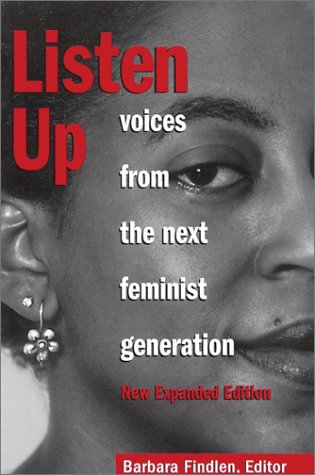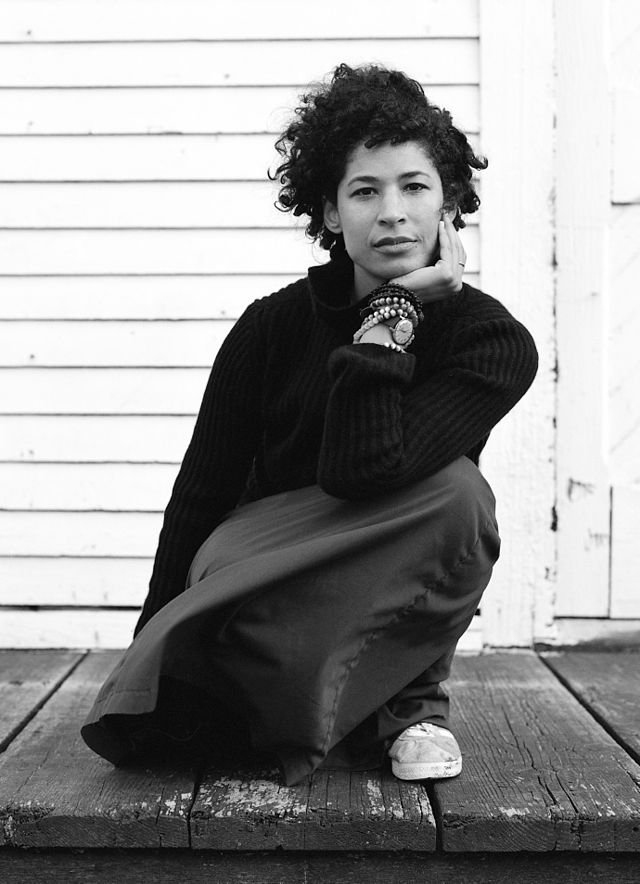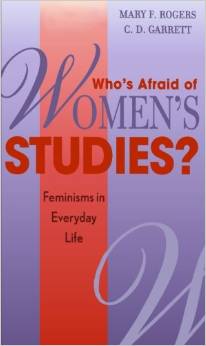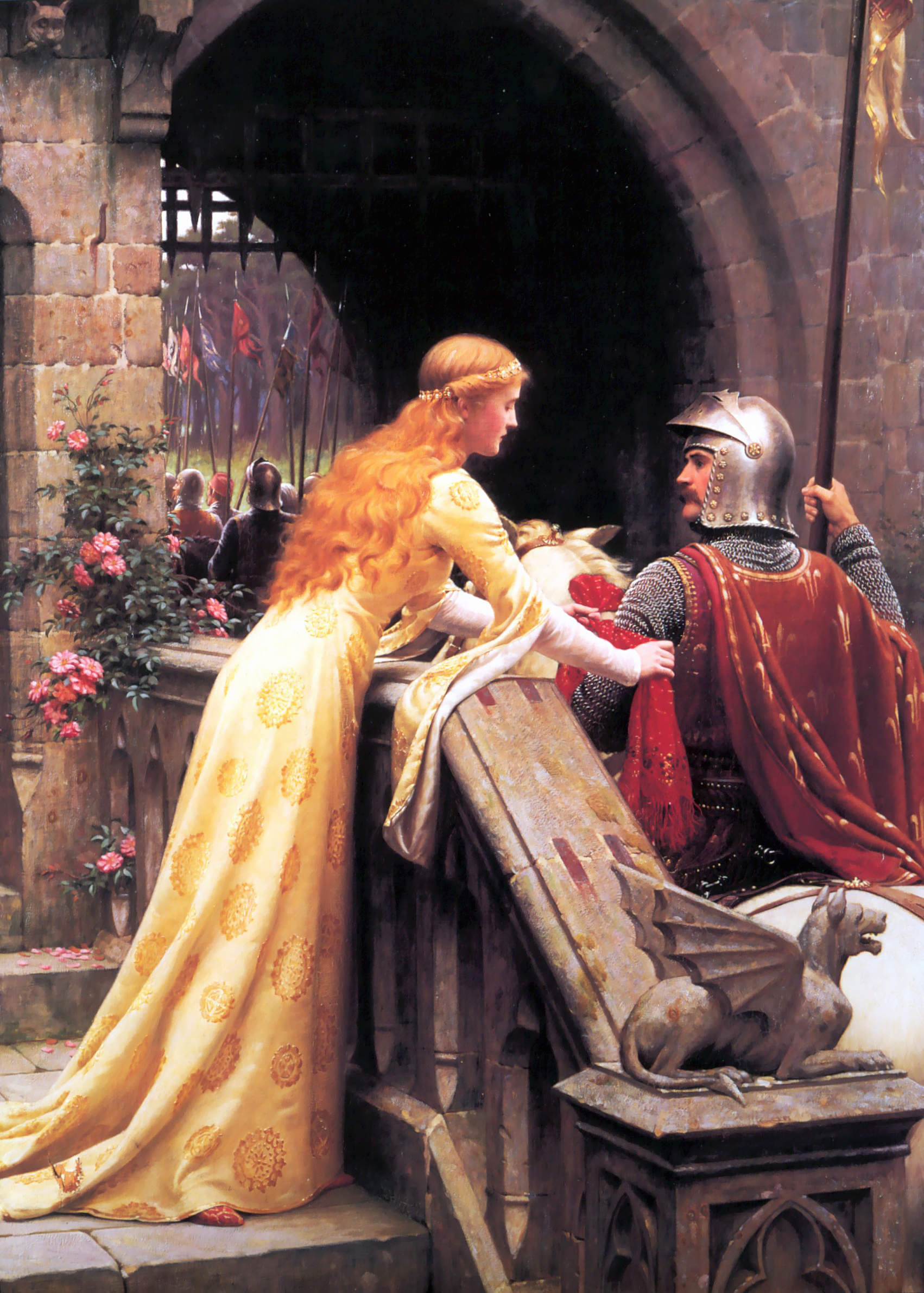A shorter version of this article first appeared in Salvo 27: Winter 2013. It has been updated and reprinted here with permission. Warning: in discussing the deviations of radical feminism, this article contains some explicit and offensive material
On February 14 this year, students in college campuses throughout America will gather to celebrate V-Day 2015. This is not another way of referring to Valentine’s Day, which also occurs on February 14. Rather, V-day is the feminist alternative to Valentine’s Day.
Unlike Valentine’s Day, which is a time for men and women to celebrate their love for each other, V-Day is a time for women to celebrate their sex organs. Instead of sharing heart-shaped gifts with the individuals we love, people are encouraged to offer vagina-shaped gifts to the public.
 Some of the trademark activities of V-Day include performances of Eve Ensler’s pornographic play, The Vagina Monologues, and public readings of the compilation A Memory, Monologue, A Rant, and a Prayer. Both these texts include graphic descriptions of female sexual experiences.
Some of the trademark activities of V-Day include performances of Eve Ensler’s pornographic play, The Vagina Monologues, and public readings of the compilation A Memory, Monologue, A Rant, and a Prayer. Both these texts include graphic descriptions of female sexual experiences.
V-Day piloted in 1998 with the ostensible aim of raising awareness and money for female victims of sexual abuse. It was inspired by Ensler’s 1996 play, which tells both true and fictional stories (mostly the latter) of women being abused. It also seeks to empower women to take control of their sexuality rather than to be the passive victims of male violence.
The subtext behind V-day is that men are the enemy and that most women have suffered violence at their hands. Propped up by bogus statistics, the back-narrative to the movement is that man-woman relationships are dirty, and that heterosexual love is normally a gateway to the annihilation of female dignity.
Every year V-day celebrations leave college campuses flooded with an array of offensive material that appears to have little connection with the fight to prevent violent crimes against women. For example, Roger Williams University was flooded with signs that read, “My Vagina is Huggable,” “My Vagina is Flirty,” and “My Vagina is Regal” while students at University of North Carolina-Chapel Hill went around in T-shirts that read “I ❤My Vagina.” Not to be beat Boise State University distributed vagina lollipops while Arizona State University constructed a 40-foot inflatable vagina on campus. One popular V-Day activity involves a woman inviting audiences to participate in repeated chanting of an explicit word for a woman’s vagina.
Behind the annual celebration of V-Day is an incredibly powerful non-profit charity of the same name, which raises money for far Left organizations such as Feminist.com, Planned Parenthood, Girls, Inc, and various gay and lesbian centers.
On the surface, the logic of V-Day seems strange. After all, if we are really concerned about preventing sexual abuse against women, wouldn’t it be more effective to offer women lessons in basic self-defense techniques instead of encouraging them to participate in pornographic readings? Or again, what possible connection can there be between empowering women to resist violence and encouraging them to distribute vagina-shaped lollypops?
While V-Day may seem to make little to no sense, it is actually a very logical application of a certain strain of modern feminist ideology. Indeed, by hijacking a holiday that has historically celebrated love between the sexes and replacing it with a day that encourages women to shamelessly flaunt their sexuality, the feminists behind the movement are making a powerful statement about their true priorities and goals. To make this clear, I want to take you on a brief journey through the history of modern feminism.
Females Celebrate Womanliness
In the eighteenth and nineteenth centuries, many female thinkers believed they were defending their sex precisely through asserting, maintaining and celebrating appropriate gender distinctions. For example, the Victorian writer Elizabeth Wordsworth once noted that “In an ideal state of society we never lose sight of the womanliness of women…why should it be considered a compliment to any woman to be told she writes, paints, sings, talks, or even thinks, like a man?”

Even more “progressive” female thinkers who challenged conventional “feminine” virtues and roles, usually took it for granted that there was a relation between one’s biological sex and innate gender distinctions, and that such distinctions were a source of feminine dignity. For example, Abigail Adams (1744–1818), who is considered a pioneer of early feminism, wrote to her sister praising Jefferson’s daughter for “so womanly a behavior.” Similarly, in the work of certain eighteenth-century female novelists who are now celebrated as proto-feminists, we find examples of women asserting their female dignity precisely by glorying in their inherent womanliness.
The assertion of female dignity went directly against practices—such as prostitution or sexual slavery—that reduced a woman’s value or identity to her sex organs.
Feminism and the Problem of Womanliness
Throughout the twentieth-century, feminist writers began to see themselves as defending their sex precisely through their attempts to homogenize the gender polarity. No longer was it considered uplifting to emphasize the womanliness of women, as Elizabeth Wordsworth or Abigail Adams had done; but neither was it uplifting to explicitly praise women for being like men. Rather, under the feminist androgyny and egalitarianism of the twentieth-century, the greatest gift we can give women is to question the very category of womanliness.

At any time in the past, outright attacks on the womanliness of women would have been seen as pure misogyny. However, part of the genius of twentieth-century feminism was its ability to associate the notion of womanliness—and the “gender system” in which it was allegedly embedded—with violence against females. Shelia Ruth summarized the basic concern in her 1998 book Issues in Feminism: An Introduction to Women’s Studies: “Feminists generally agree: Women are the victims of male violence. Such violence is an integral part of the gender system…” According to this narrative, the only way women can escape the violence is to escape from the binary gender system.

Paradoxically, the real victims in this paradigm shift were women themselves, especially girls who still wanted to pursue activities that depended upon some degree of womanliness. In The Politically Incorrect Guide to Women, Sex, and Feminism, Carrie Lukas shared how many women feel guilty or marginalized for wanting to embrace the more conventionally feminine roles of wife and mother. Such women are often demonized in Woman’s Studies courses for having allegedly fallen victim to what is termed “heterosexual bribery.” Lukas cites one Woman’s Studies textbook which defines ‘heterosexual bribery as “the dangerous fantasy that if you are good enough, pretty enough, sweet enough, quiet enough, teach the children to behave, hate the right people, and marry the right man, then you will be allowed to co-exist with patriarchy in relative peace…” The subtext is clear: and the only reason some women are pretty and sweet is because they are trying to keep an aggressive male population at bay.
It is true that throughout history much of what has been considered “womanly” has not only been nonsense, but has been the source of great harm to women. However, it is a non sequitur to assume that because many of the roles assigned to the sexes have been culturally conditioned, that all gender differences are culturally limited. We should be able to agree with feminism that how we perceive our gender and sexuality is largely the result of cultural nurture. Where feminism goes wrong is when it assumes that because manhood and womanhood are partly cultural creations that they are entirely cultural constructions. This non sequitur has been at the heart of feminist antipathy to womanliness.
Feminism and the Sex Problem
The fear of womanliness found its greatest expression in the campaign to abolish marriage that consumed feminists in the mid twentieth-century. However, the feminist movement found that attacking marriage wasn’t enough. Unmarried women can still have sex with men, and when a woman offers herself sexually to a man, she is practically encouraging him to celebrate that which makes her most womanly. From the feminists point of view, the problem with sexual intercourse is not simply that the inequalities (differences) between men and women emerge, but that these inequalities present themselves in a context that is delightful, and where men and women become most themselves by being most different. (This difference is not merely biological. Studies have shown that men and women respond to sex differently on a neurological and emotional level.) This has led many feminists in the twentieth and twenty-first century to vilify sex.

As early as 1934, Naomi Mitchison complained that the feminist movement was creating a generation of women so fostered on a defiant idea of equality that the mere sensation of the male embrace roused an undercurrent of resentment. C. S. Lewis commented on Mitchison’s words in his essay ‘Equality’ in Present Concerns. Lewis observed that “at some level consent to inequality, nay, delight in inequality, is an erotic necessity.” Lewis went on to speak of the tragic-comedy of the modern woman who is “taught by Freud to consider the act of love the most important thing in life, and then inhibited by feminism from that internal surrender which alone can make it a complete emotional success.”
Many feminists in the latter half of the twentieth-century to the present have argued that the way to avoid this internal surrender of the female to the male is to excise romantic love from sex. Evacuating love and romance from intercourse seemed a straight-forward way to avoid the unfortunate residue of “patriarchy” which surfaces every time a woman surrenders herself emotionally to a man. By reducing sex to a purely biological function, the more “womanly” dimensions of sexuality (i.e., child-bearing, a woman’s need for sex to occur within a context of male protection and emotional nourishment, etc.) can be avoided. According to the narrative of many modern feminism, a woman should be able to fornicate with as much emotional detachment as a Don Juan.
Just how is this liberating for women? The answer to this question is found in such books as Sharon Thompson’s Going All the Way: Teenage Girls’ Tales of Sex, Romance, and Pregnancy, or Leora Tanenbaum’s Slut! Growing up Female with a Bad Reputation. These feminist writers argue that the only reason casual sex leaves young girls wounded and vulnerable is because they have made the mistake of fusing sex with love. The solution, Thompson argues, is for girls to stop “condition[ing] sexual consent on romantic expectations.” Before the feminist utopia can truly arrive, love and romance must be excised from sex.

This new model of sexuality was embodied in Rebecca Walker’s contribution to the compilation Listen Up: Voices from the Next Feminist Generation. Rebecca Walker, an influential feminist who first coined the term “third-wave feminism”, asks “what do young women need to make sex a dynamic, affirming, safe and pleasurable part of our lives?” Her answer is that “Sex could also stand to be liberated from…marriage and procreation.” Apparently sex must also be liberated from love, for while Walker discusses the importance of sex as an opportunity for personal growth, she says nothing about its role as an expression of love for another person.
This absence is not surprising. In the thought of many modern feminists, romantic love is a sexist hangover from our misogynist past. Romance patronizes women by objectifying them. On street level, this creates real problems for girls who still cherish romantic ideals. In her book A Return to Modesty, Wendy Shalit showed that romantic desire is one of the last castles that modern feminists are out to conquer. “In a different time,” Shalit ironically observed, “a young woman had to avoid giving public evidence of sexual desire by living with someone out of wedlock, today she must avoid giving evidence of romantic desire.”
The sad thing is that by taking romance out of sex, women are left vulnerable to sexual exploitation. It is here that the real irony of modern feminism emerges. Feminists used to be content to attack things like men opening doors for women or men who offered to pay on dates. According to popular feminist narratives, these gestures are misogynist since they “objectify” women. However, this mistaken logic has now extended itself to the point whereby those things that really do objectify women (i.e., sleeping with a woman without any thought of her as a person, pursuing romance-free sexual relationships, etc.) are considered healthy and affirming.
Evacuating sex from relationship, love, romance, personhood and procreation promised to usher us into a feminist utopia, ridding the bedroom of the scepter of womanliness. However, a remaining problem for feminists was that even impersonal sex outside of marriage can entrench gender roles by encouraging certain womanly attributes (recall C.S. Lewis’s observations earlier). Thus, some feminists have argued that in order for female sexuality to be truly liberated from the systemic patriarchy of our culture, men must be removed from the equation completely. In other words, the true feminist must become lesbian, or at the least reject marriage to men.


These ideas build on the framework pioneered by feminist like Jill Johnson, who declared in 1973 that “Until all women are lesbians, there will be no true political revolution.” Johnson was echoed by a host of second-wave feminists who compared heterosexual sex to rape. For example, in 1996 Catharine MacKinnon wrote, “What in the liberal view looks like love and romance looks a lot like hatred and torture to the feminist. Pleasure and eroticism become violation.” Elsewhere the Harvard Press author said that “The major distinction between intercourse (normal) and rape (abnormal) is that normal happens so often that one cannot get anyone to see anything wrong with it.”
It should come as no surprise that after eroding all gender distinctions feminists can only respond with puritanical outrage against that one activity in which womanliness continually threatens to resurface: heterosexual sex itself.
V-Day and the Man Problem
By now you should get the picture. The narrative of modern feminism is one in which men are the enemy, romantic love is demeaning and heterosexual love is a gateway to violence. Because of this, healthy female sexuality is thought to involve sexual encounters excised of love and romance, if not completely evacuated of men. V-Day comes to us as the culmination of this long and twisted itinerary that has characterized so much of modern feminism.
The message of V-Day is predicated on the theory that patriarchal culture is at the root of all problems women face. Ensler’s The Vagina Monologues: The V-Day Edition portrays men as sex-obsessed beasts who can never be trusted. Even the problems women face that do not seem to have anything to do with men are caused by the ubiquity of patriarchal culture. As Ensler put it in her book, “Our self-hatred is only the internalized repression and hatred of the patriarchal culture.”
If one looks closely at V-Day, it becomes clear that it isn’t just patriarchal culture that these women hate: it is men themselves. Indeed, V-Day hijacks a day that has traditionally drawn men and women together and uses it as an occasion to separate them. Significantly, when I last checked the V-Day website features images of women embracing other women, but there are none of women embracing men.
If the goal of V-Day and the Vagina Monologues were really to help prevent sexual violence against women, one would have thought it might be productive to include examples of healthy sexual relationships in marriage. However, all the examples of sex in marriage are dysfunctional. The point: men are the enemy.
V-Day and the Degradation of Women
It is bad enough that V-Day demonizes men. But what is even worse is that V-Day degrades women. One of the ways V-Day degrades women is by encouraging them to flaunt their sexuality, encouraging them to act out narratives that at one time would have only been championed by misogynist men.
The reason early feminists opposed practices such as prostitution was because it reduced a woman’s value to her sex organs. V-Day, on the other hand, reduces a woman’s value to her body parts; consequently, the architects of the movement have no problem glorifying prostitution. For example, Ensler’s monologue “The Woman Who Loved To Make Vaginas Happy” tells of a successful tax attorney who leaves her career to become a lesbian prostitute. She specializes in sexual props (whips, handcuffs and ropes) that are demeaning to women.

One monologue, ‘The Vagina Workshop’, describes a woman participating in group masturbation session at a sex workshop. The leader of the workshop announces that a woman’s sexual organs “was me, the essence of me. It was both the doorbell to my house and the house itself.” By suggesting that a woman can be reduced to her sexuality, and that her sexuality can be reduced to a single body part, V-Day objectifies women in the worst possible way. If anything, this mentality increases the likelihood of women being abused since it encourages them to be perceived as little more than sex objects.
Ironically, V-Day treats sexual abuse as not really that bad if the abuser is another woman. The monologue ‘The Little Coochie Snorcher That Could’ positively recounts the story of a woman raping a 16-year-old girl (in the first edition, she was 13). The victim describes the rape as a “surprising, unexpected, politically incorrect salvation” that “transformed my sorry-ass coochi snorcher and raised it up into a kind of heaven.” In the original version, the monologue ended with the line: “If it was rape, it was a good rape.”
To my old-fashion way of thinking, this is not pro-female at all, but quite the opposite. Clearly I am a minority, however. In 2001, Time Magazine awarded Eve Ensler, author of The Vagina Monologues, with the ‘Best Feminist in America’ award.
Why Feminists Hate Valentine’s Day
While some feminists have spoken out against the crude presentation of female sexuality championed by V-Day, what they have failed to appreciate that V-Day is the culmination of the long and twisted itinerary of modern feminism.

At the heart of modern feminism is its virulent antagonism to romantic love. This antagonism was reflected by Amy Erickson’s comment in 1993 that “romantic ideals were simply a means of maintaining male dominance at a time when overt demands of submission were no longer acceptable.” Erickson was echoing Andrea Dworkin who declared “Romantic love…is the mythic celebration of female negation.”
Since Valentine’s Day is the celebration of romantic love, it was inevitable that feminists would eventually attempt to replace the holiday with something else.
Significantly, the replacement of the heart (the traditional Valentine’s Day symbol) with the vagina (the V-day symbol), is a powerful indication of many feminist’s desire to demystify female sexuality. By reducing sexuality to its most basic biology, the message of V-day is consistent with the de-romanticizing of sex that was the goal of so much modern feminism.
Further Reading

